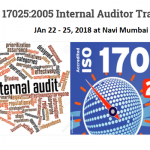Outline of an Environment Policy
An environmental policy is the foundation of an organization’s environmental management system. As per ISO 14001, all decisions and actions taken by the organization must be consistent with, and designed to accomplish the commitments made in, the environmental policy.
An environmental policy should reflect the vision, intentions, philosophy, values, and beliefs of the organization with respect to the environment. Top management should put a great deal of thought and imagination into developing and crafting the policy, since it will become the code of conduct by which the organization lives and operates. The policy should be practical and inspirational, providing a framework and a compass for business and technical decisions and actions, and at the same time motivate and encourage all personnel in the organization to achieve excellence in environmental performance.
The ISO 14001 Standard specifies several requirements for the development, content, intent, and implementation of an environmental policy:
1. Top management is responsible and accountable for defining the organization’s environmental policy. They must, as a minimum, carefully review, approve, and commit to abiding by an environmental policy that has been developed for their consideration.
2. The policy must completely cover the organization’s (i.e., facility’s) range of operations, including where appropriate, raw material acquisition, transportation, packaging, and shipping of product,as well as all on-site operations that may impact the environment.
3. The policy must contain three core commitments that are ISO 14001 absolute requirements:
(i) A commitment to continual improvement of the EMS and environmental performance.
(ii) A commitment to the prevention of pollution (i.e., this means taking all reasonable steps to eliminate, or at least minimize, pollution).
(iii) A commitment to comply with relevant environmental legislation and regulations, and with other requirements to which the organization subscribes. This means the organization commits to meet local, regional, and national legislated environmental standards.
4. The policy must give direction and a framework for progress through new environmental objectives and targets that will be set during the course of implementing and maintaining the EMS.
5. The policy must be documented, and it must be implemented through the day-to-day functioning of the EMS.
6. The policy must be maintained, meaning kept up to date and relevant to current operations and conditions.
7. The policy must be communicated to all employees. This implies active, intentional efforts by the organization, led by top management, to ensure all employees know about, understand, and apply the principles, ideas, and commitments in the policy.
8. The policy must be made available to the public, i.e., it must be accessible to all members of the public who wish to see it.
In addition to the essential requirements for an environmental policy, other considerations that may be incorporated into the policy include:
â€¢ï€ Principles of sustainable development, resource renewal, and preservation of biological diversity
â€¢ï€ A commitment to use the most effective pollution abatement technology and equipment, consistent with economic viability of the business (i.e., BEAT – Best Economically Achievable Technology)
â€¢ï€ Use of environmental performance indicators to quantitatively monitor progress
â€¢ï€ Life cycle thinking – consideration of ‘cradle to grave’ impacts of a product, which would require the organization to assess cumulative environmental impacts from all stages, from design of the product; acquisition of raw materials; processing to finished product; packaging; shipment; end-use; and ultimate re-use, recycle, or disposal.
For all components of this element of the Standard to be brought to fruition, it is essential that there is clear allocation of responsibilities for developing, approving, communicating, disseminating, implementing, maintaining, and when necessary, revising the environmental policy.
Although environmental policy is the first element of ISO 14001, it may be prudent for an organization to defer finalization of the wording of their policy until work has been done to identify the scope of environmental impacts from the operation, and other planning and preliminary preparation for the EMS has been done. This will help to ensure the policy is authentic and appropriate for the organization’s purpose.
If you would like to learn more, contact us at info@lakshy.com or visit www.lakshy.com or call our 24 hours customer care +91 9821780035 to get your organization ISO 14001:2004 certified.







